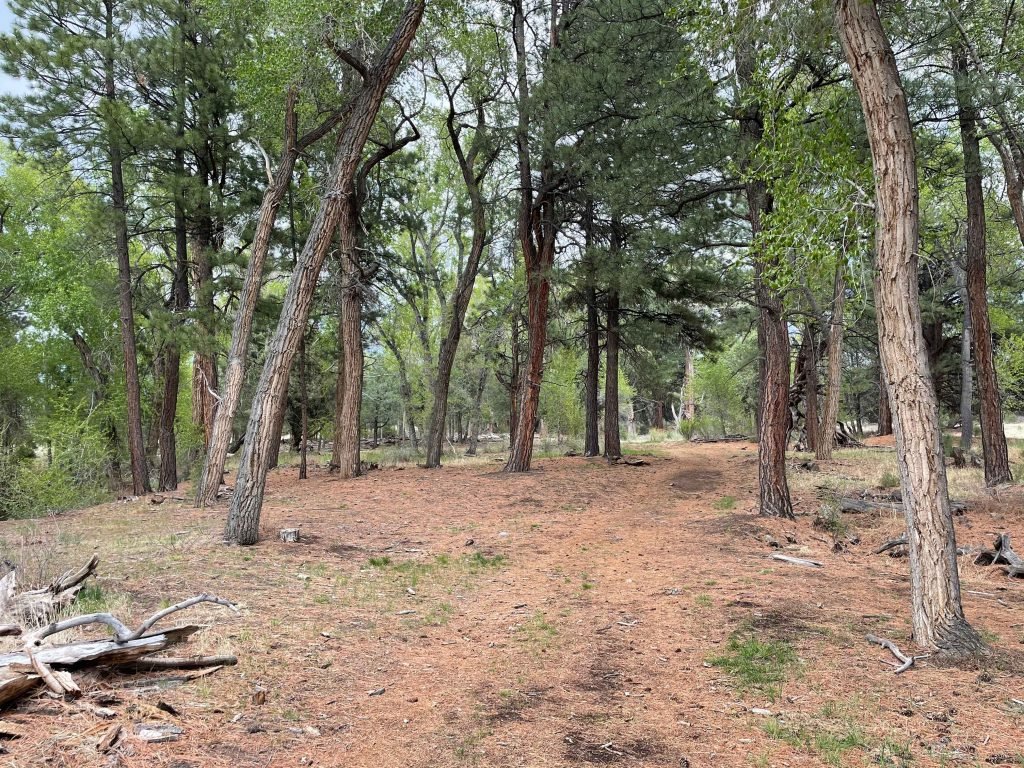By Daniel S. Johnson, Saguache County Firewise Program.
Do we save the greenbelts from fire or from fire mitigation? Firstly, I want to state that I am not working on the Baca Fire Department’s greenbelt or common lands mitigation, nor am I a spokesperson for them. My Firewise Program focuses on private lands to reduce wildfire threats to homes. But fighting wildfires has been my career for 49 years and I still do, so I can offer a valid assessment of the projects.
There is no rational argument that most greenbelts are not overgrown and unhealthy. The original work on South Crestone Creek was started after a citizen and his dog were almost crushed by a falling snag soon after the Baca received a grant for treating common lands.
The forest was such a tangle of mostly dead trees that a deer could not walk through it off-trail. Clearing out the leaners and widow-makers was a daunting task and it took a month to go even 100 yards.
Much of the wood was bucked into firewood and residents were invited to take it home, often with firefighters loading their vehicles and sometimes delivering loads to elderly folks who could not get their own. The remaining slash was dragged to the mitigation pit until a wood chipper was obtained.

That greenbelt was returned to a state of health, with proper tree spacing and sunlight actually hitting the soil, creating grasses, wildflowers, and other forage for wildlife. Deer could see predators; bird activity increased dramatically.
Throughout the Southwest and West there are many thousands of forested acres that need to be treated before a wildfire reduces all life to ash or charcoal, including the creeks. Many larger communities and federal lands are being treated by mechanical means.
A masticator is like a portable garbage disposal that erases trees and brush. It can take over a decade to compost this material unless fire is run over the surface. Feller/bunchers and cutters leave high stumps but allow the large trees to be harvested for sawmills. I assure you, this would not be popular for a nature-loving community.
The last option is to leave the overgrowth as is until fire barrels through, which some folks think is saving the greenbelts from management. The soil gets fired like a clay pot, all organic material is consumed and washes off in mud and ash slides. Creeks, roads, and even homes can be destroyed. To me, this is the worst option.
It may be slow, grueling work, but I see the fire department crew making amazing progress in protecting the common areas from total destruction while keeping the beauty we all love.
Take a hike and look at South Crestone Creek, which was done two to three years ago. The more recent projects on Willow and Spanish Creeks still look like they got a haircut but new life is sprouting everywhere.
It is difficult to remove the tons of large dead and down trees that have been on the ground rotting for decades.
The nutrients might be released back into the soil faster by experimental mushroom implantation, as suggested by Peter May at a recent meeting, or through burning.
It is so time consuming to try removing these tons of material, and heavy truck traffic is required, so some areas may seem unfinished, although they are more resistant to fire and now allow fauna and flora to thrive.
I support the slow handwork that is being done to preserve these gems of the Baca. Imagine all those sweet creeks being filled in with ash flows, dead for decades. I hope this helps folks to understand the seriousness of doing nothing, and the decisions to do hand thinning and chipping, paid for by grants, not by POA dues.
The grants also pay firefighters to get more qualifications for responding to wildfires, and to get better equipment. I see the present methods as a middle road, to save the greenbelts from wildfire as well as saving them from over-thinning via huge machinery.
Photos: Crestone Creek prior to mitigation shows an area choked with deadfall; Crestone Creek post mitigation shows the forest floor opened up. Photos by Daniel Johnson


